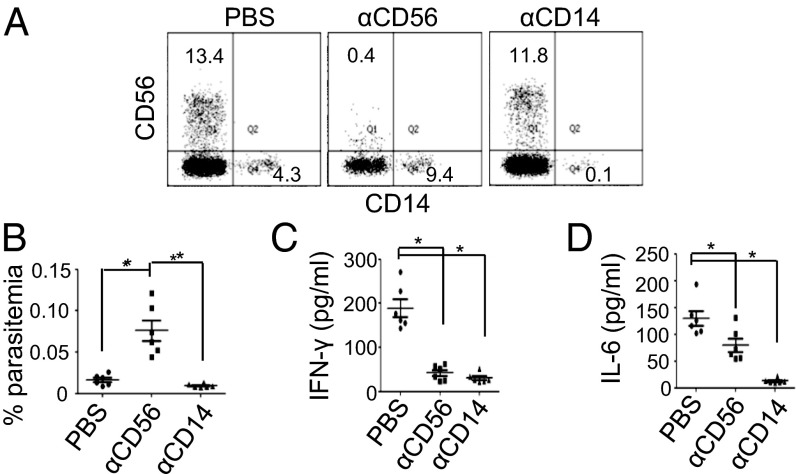Fig. 2.
NK cells play a critical role in the control of parasite infection. Seven days after cytokine treatment and 6 d after RBC supplementation, RICH mice were injected with PBS, anti-human CD56 antibody (αCD56), or anti-human CD14 antibody (αCD14). One day later, mice were bled, and the levels of human NK cells and monocytes/macrophages in PBMCs were analyzed by flow cytometry. Then mice were infected immediately with 5 × 106 3D7 ring-stage parasites. Two days later, parasitemia was analyzed in the whole blood by microscopy, and human IFN-γ and IL-6 in the serum were measured by ELISA. (A) Depletion of human CD56+ NK cells and CD14+ monocytes/macrophages in treated mice. Shown are representative CD14 vs. CD56 staining profiles of hCD45+ PBMCs of control, αCD56-, and αCD14-treated mice. The numbers indicate the percentage of cells in the gated regions. (B–D) Comparison of parasitemia (B) and serum levels of human IFN-γ (C) and IL-6 (D) in the three groups of mice. Each symbol represents one mouse. Data represent mean ± SEM. *P < 0.01. n = 6 for each group.

